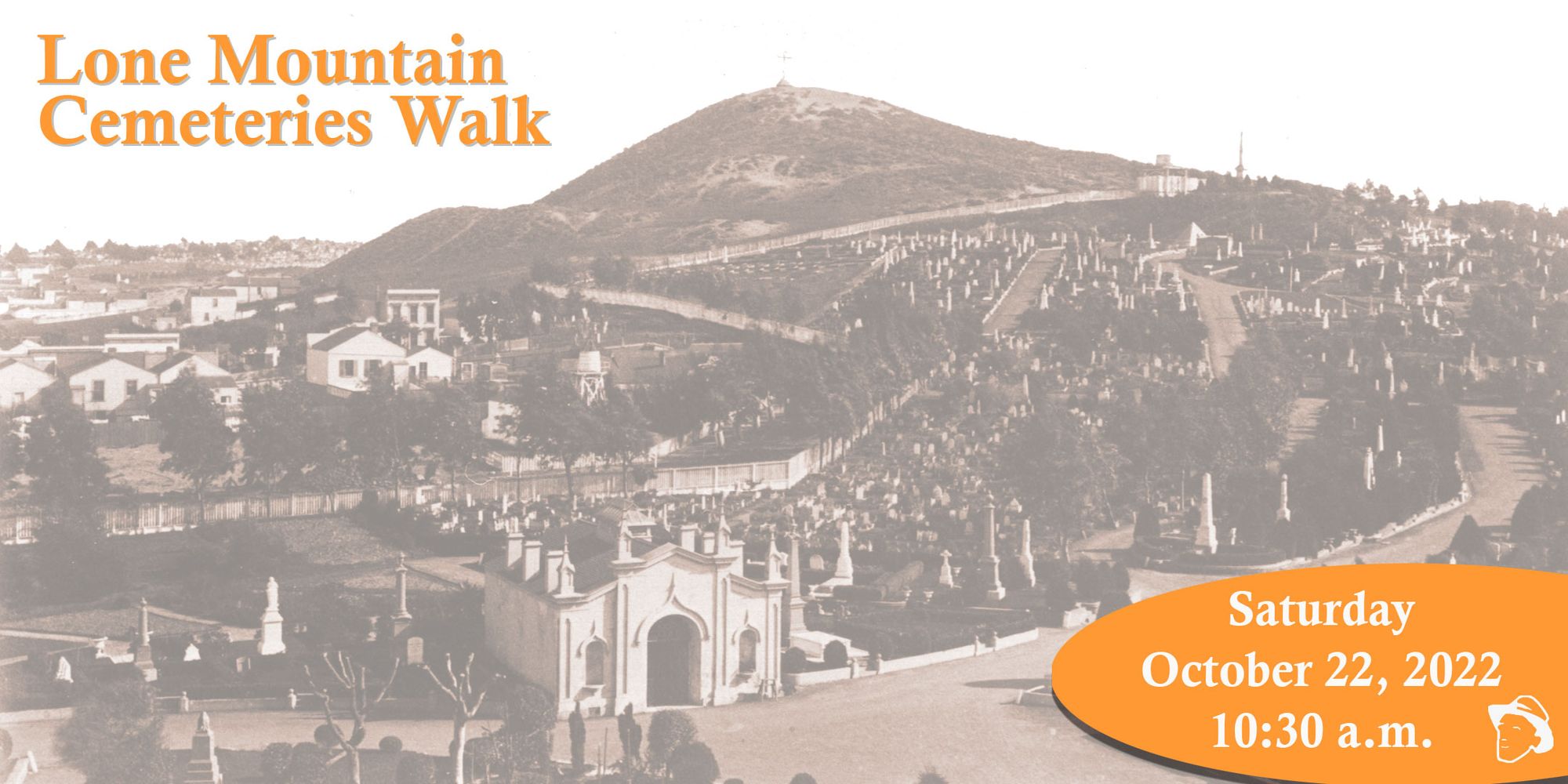10 Highlights from the 1894 Midwinter Fair
The good, the bad, and the ugly from the 1894 fair which made Golden Gate Park's Music Concourse.
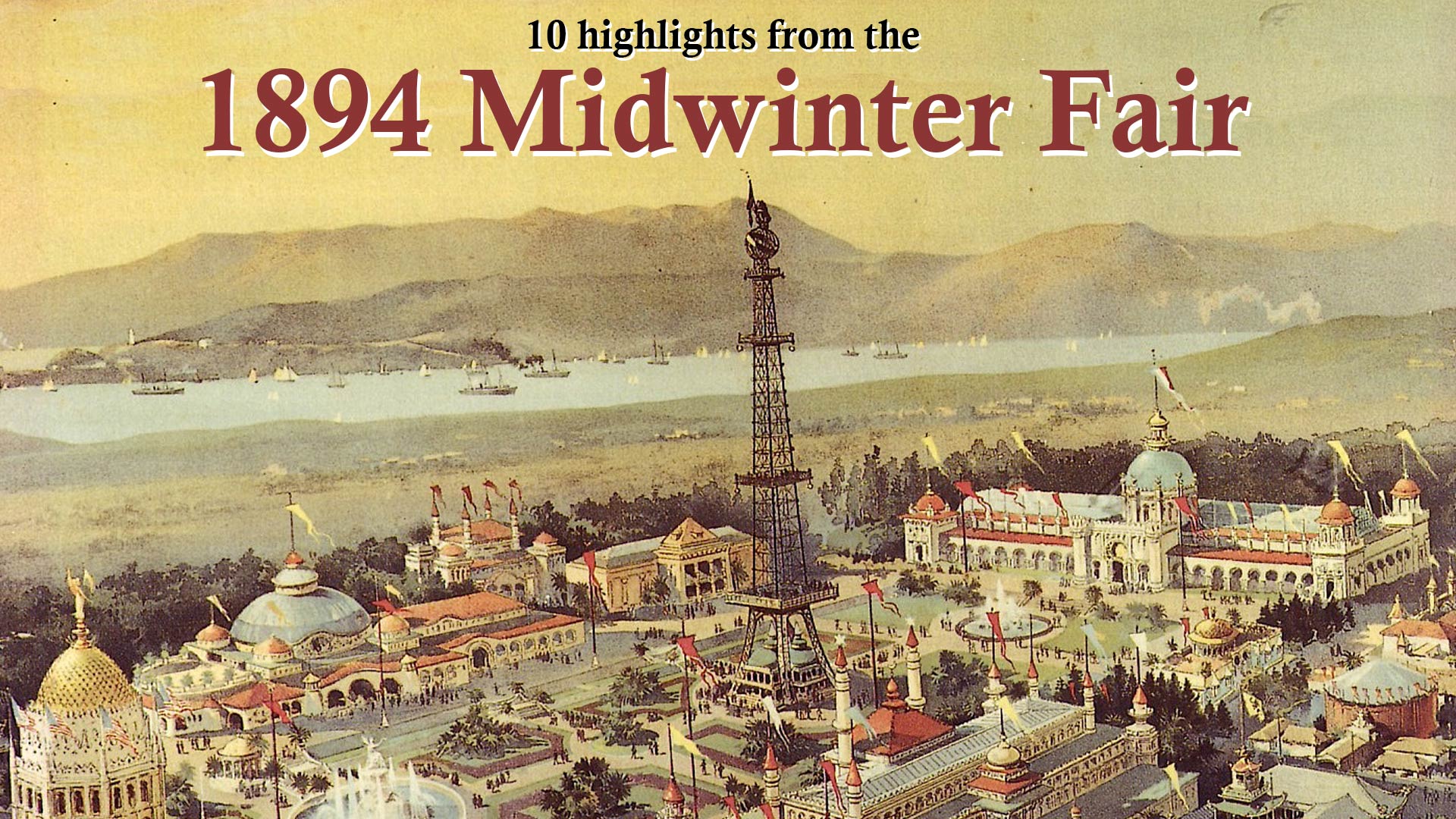
In 2020, the San Francisco Recreation and Parks Department decided the best way to celebrate the 150th anniversary of Golden Gate Park would be a Texas concessionaire running a giant lighted “Sky Wheel” ride in the Music Concourse. Most folks call this a Ferris wheel, a name inherited from George Ferris's invention at the 1893 World's Columbian Exposition in Chicago.
The wheel’s tangential connection to park history is that a much smaller one operated nearby as part of the 1894 California Midwinter International Exposition, better known as the Midwinter Fair. (To avoid a lawsuit with Ferris, it was officially called the “Firth Wheel.”)
The Music Concourse was created for the exposition and there are actual relics of the fair still there today: benches with iron frames stamped “1894 Midwinter Fair,” the Dore vase in front of the de Young Museum, and a defiant statue of the ancient Spartan king Leonidas.
By recycling attractions and concessions from the much grander 1893 Chicago fair the Midwinter exposition organizers hoped to jump-start a lousy local economy, showcase California as resource-rich, and crown San Francisco as the “Imperial City on the Western Sea.”
This included lots of Manifest Destiny and racist garbage mixed with some pretty architecture and light shows. It was a fair that had something for everyone, I guess. There’s lots to read and pictures to ogle (I'll share links throughout), but here are ten highlights from the 1894 Midwinter Fair:
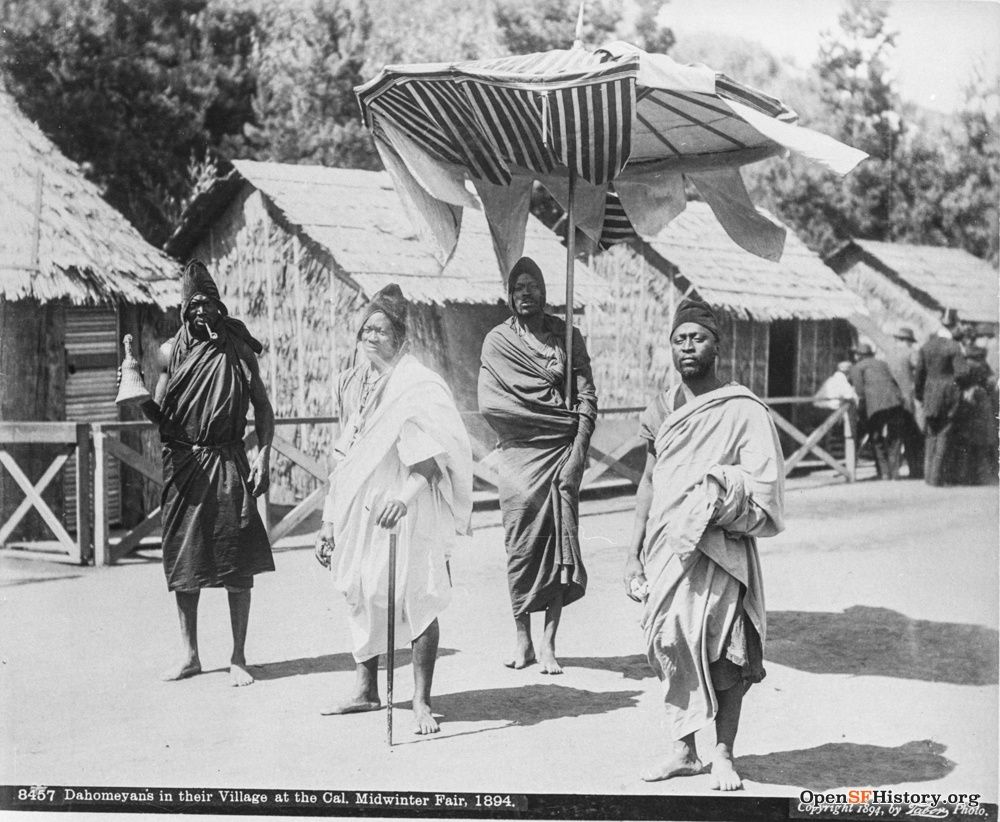
Number 1: Let’s start with the stars of the show. Performances by Dahomean men and women were the big hit of both the 1893 Columbian Exposition and the 1894 Midwinter Fair. Subjected to endless racist tropes in the press and who knows what abuse in person, the performers were at least given respect by a black fraternal lodge in San Francisco, which hosted a celebratory banquet in their honor. While Dahomean men and woman starred at a fair with themes of white supremacy and expansionist ambition, their 300-year-old kingdom in present-day Benin was being lost in a war of colonization with France.

Number 2: The above lithograph gives some justice to the colorfulness of the 1894 exposition that black and white photos do not. The Midwinter Fair actually had a Director of Color and the overall scheme was meant to reflect California’s “climactic conditions.”
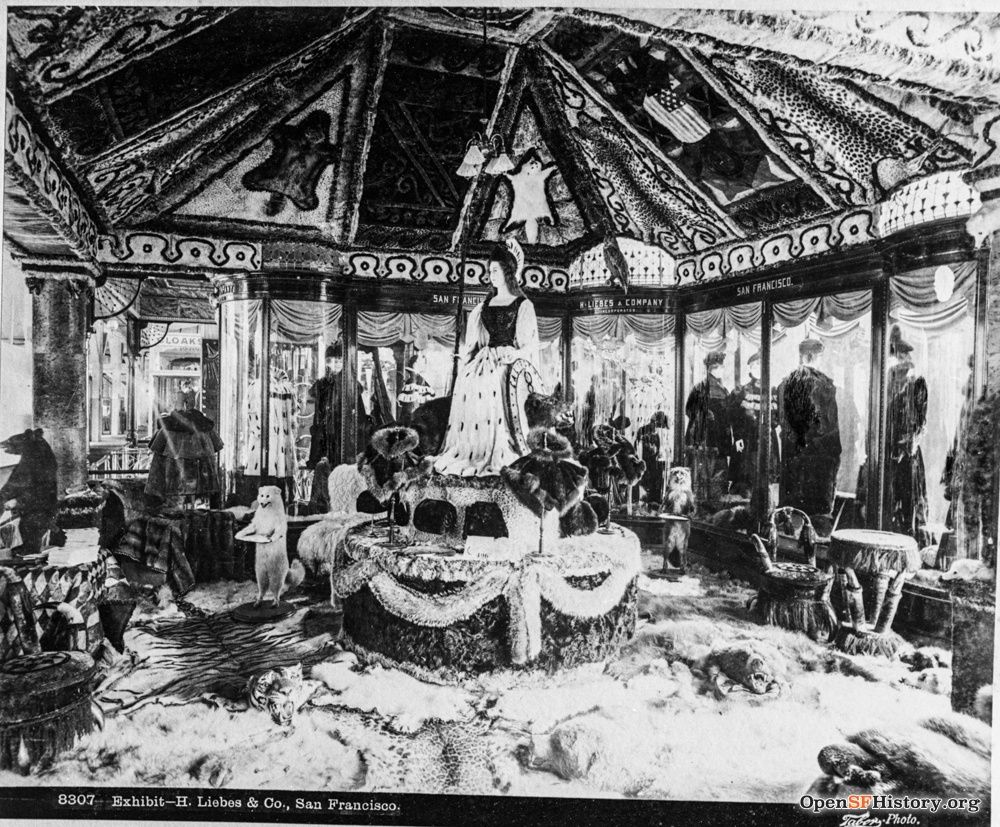
Number 3: One of the many over-the-top commercial exhibits inside the Manufacturers and Liberal Arts building was the H. Liebes & Co. million-dollar fur exhibit. Wallpaper made of furry animals, clothing made of furry animals, rugs made of furry animals, and furry animals made into side tables. As I said, this fair had something to offer, er, offend everyone.
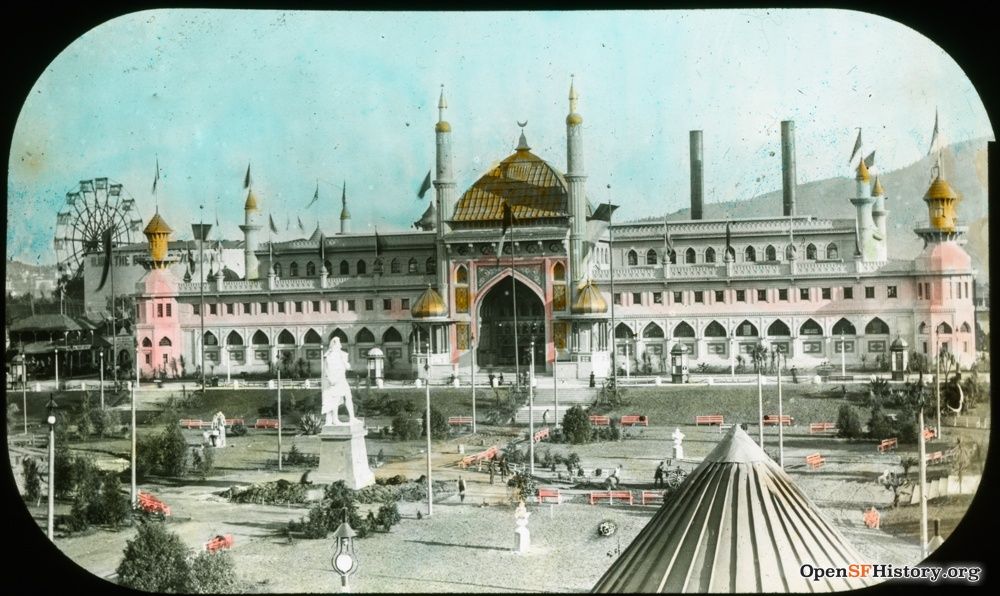
Number 4: The Mechanical Arts Building stood roughly where the California Academy of Sciences is today. In addition to exhibits of generators, mining equipment, and mineral collections, the building served double-duty by housing the steam works that powered the entire fair, including the first wheel ride in the park, visible on the left side of the color slide above.
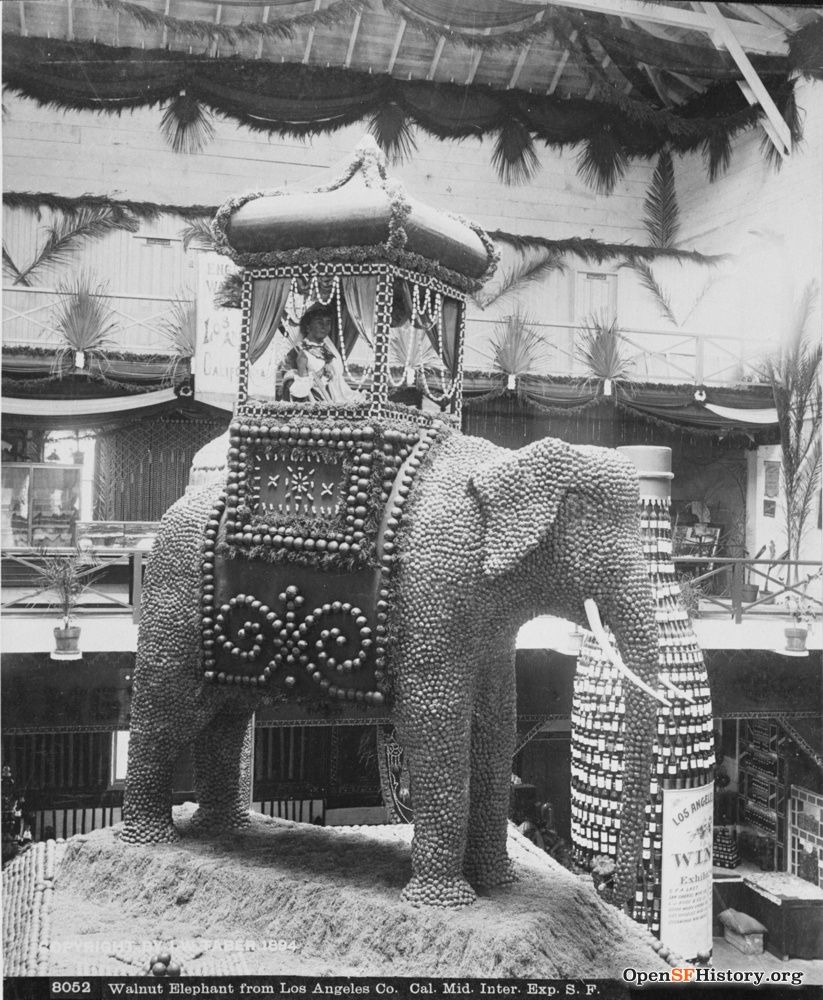
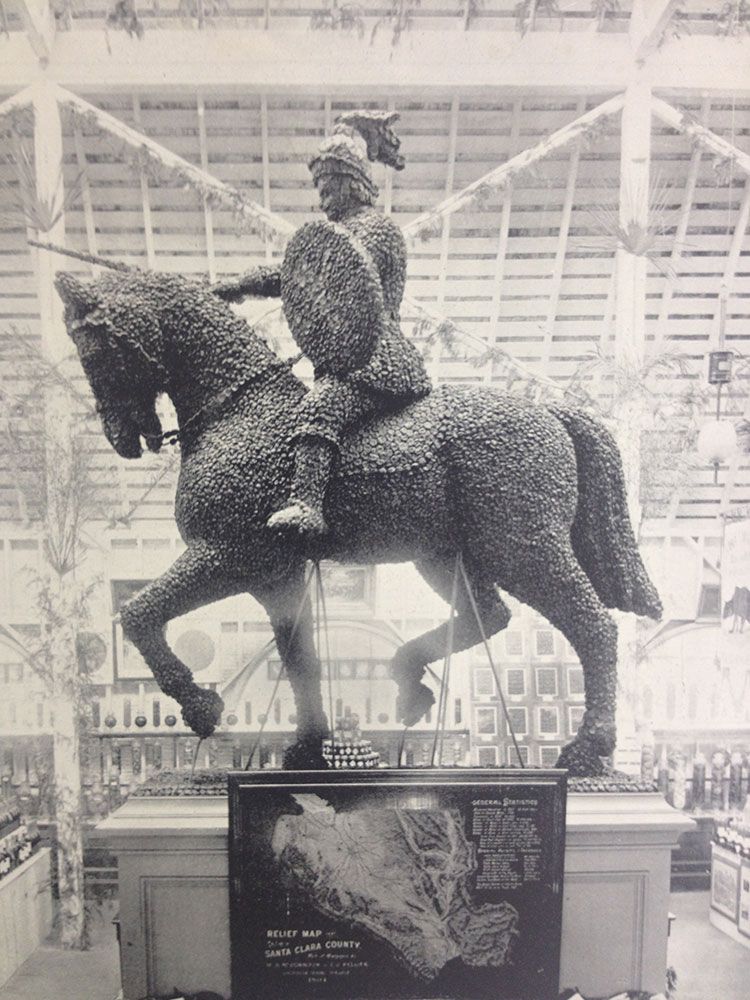
Number 5: Across the concourse from the Mechanical Arts Building was the Horticultural and Agriculture Building. What better way to demonstrate California’s fertility than to make sculptures of the state’s agricultural bounty? Like a knight in armor made of prunes. Or an elephant made of walnuts.
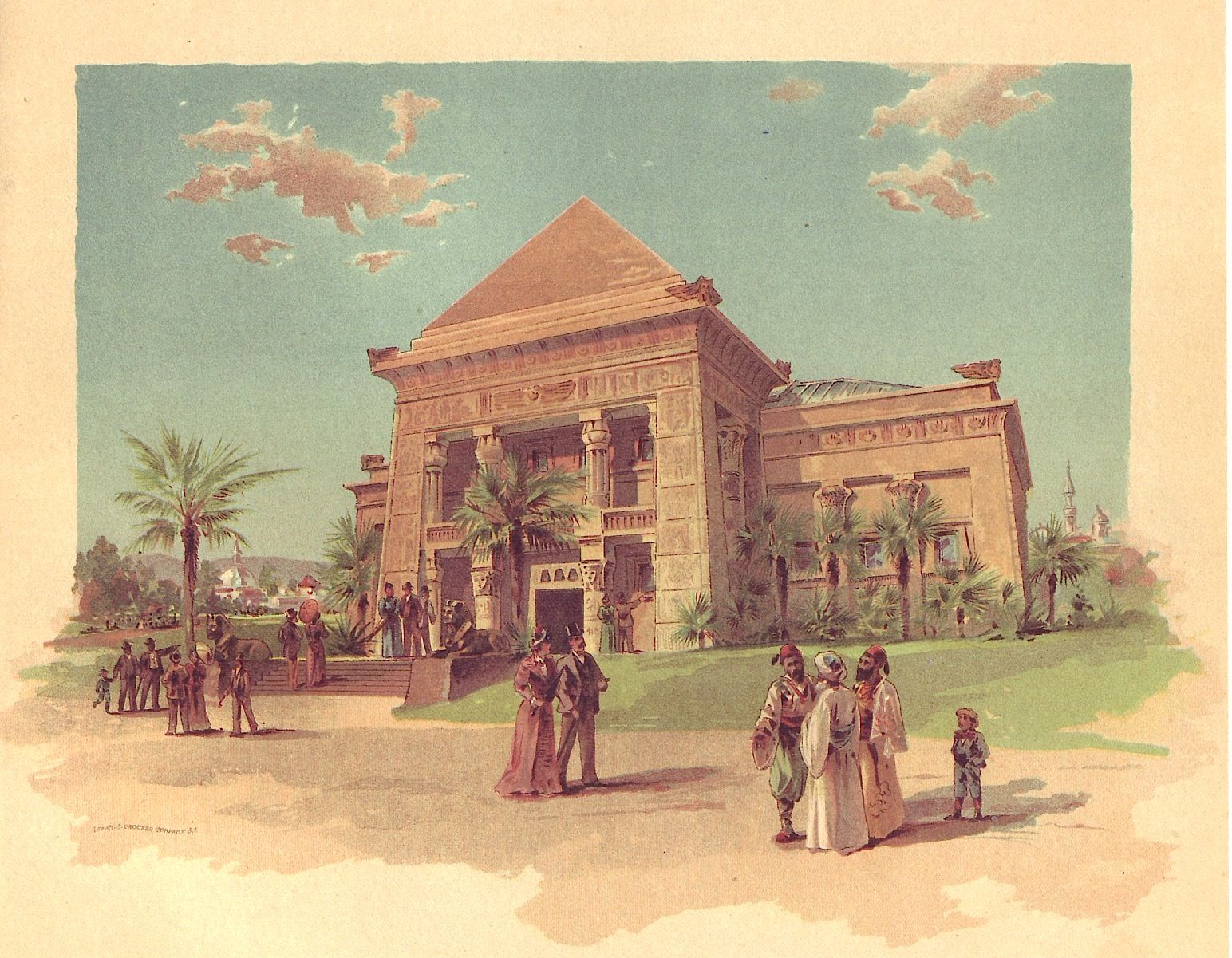
Number 6: Next door to the Horticultural Building was the Fine Arts Building, one of the only fair buildings intended to be permanent when it was constructed. This was the ancestor of today’s de Young Museum. As Egyptology was all the rage, it was designed to look like a pharaoh's tomb. The Santa Barbara county building went with something similar, as did a hoochie-coochie dancer concession.
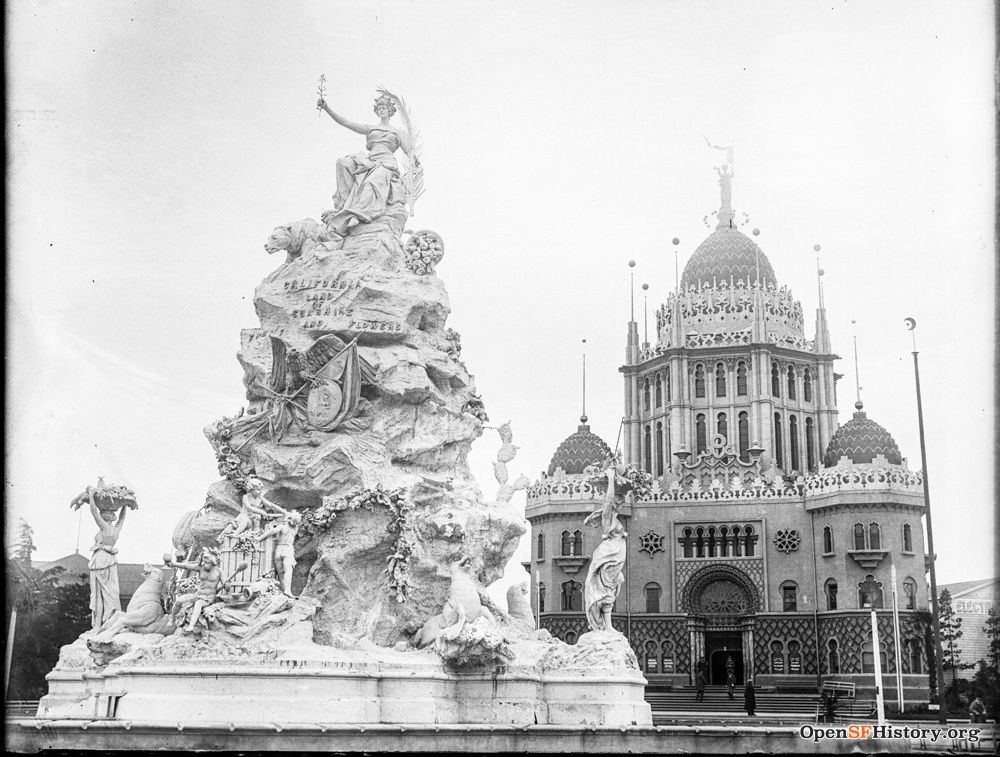
Number 7: Behold above the ugliest fountain ever created. A ham-handed allegory of the state, it had mining sluices, cacti, grizzly bears, sea lions, and cornucopia plastered over it. And if you still didn’t get it, the words: “California, Land of Sunshine, Fruit and Flowers” were affixed near the top. The “Mooresque” structure behind it was the fair's Administration Building.
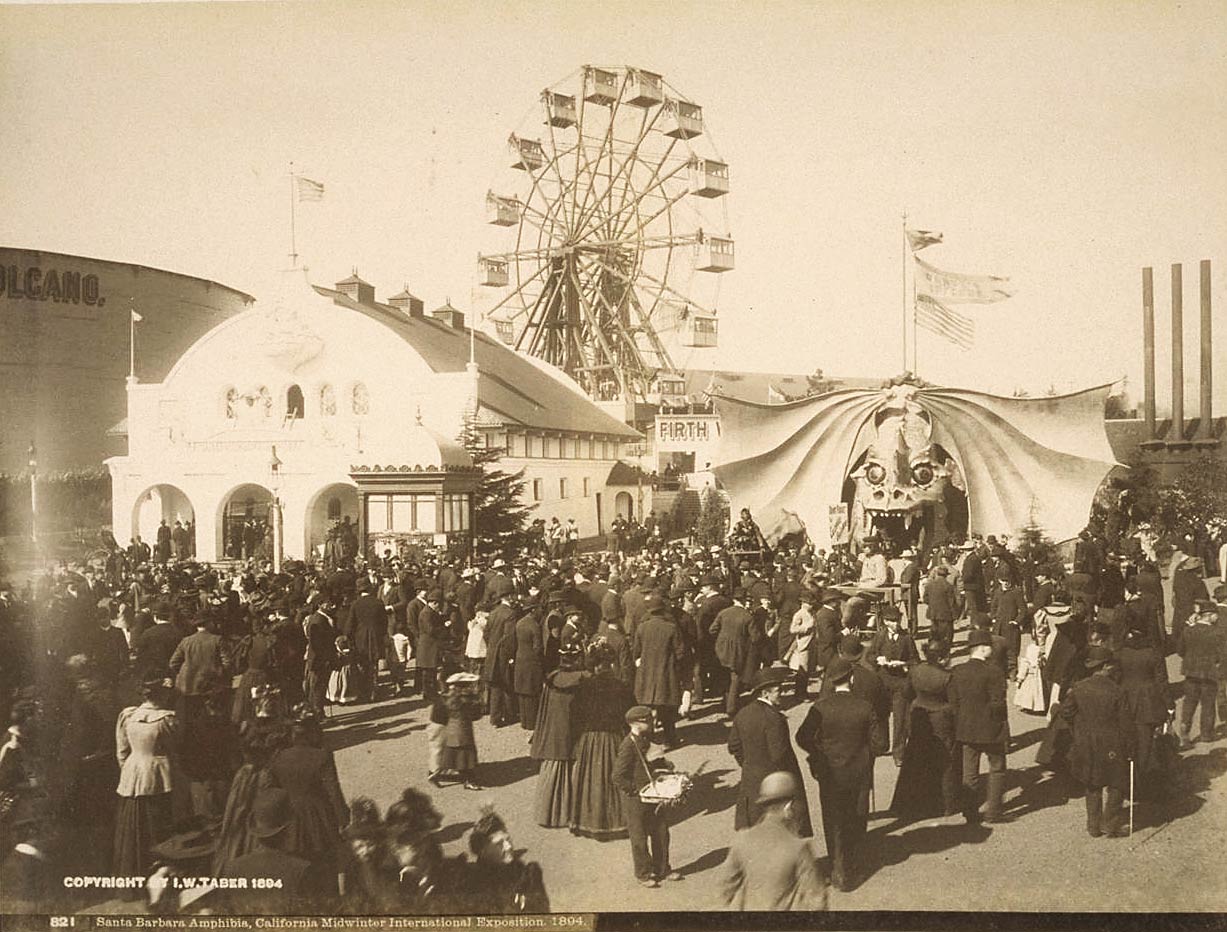
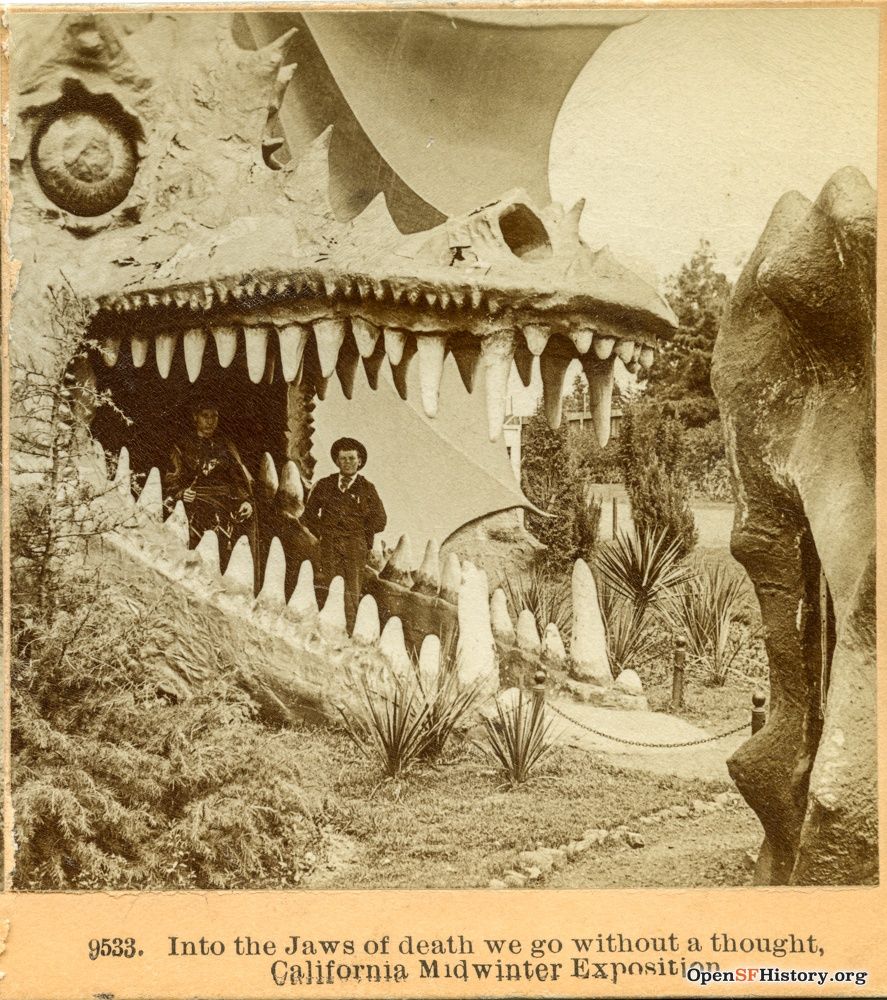
Number 8: Dante’s Inferno was a scare attraction in which one entered the mouth of a dragon’s head to stumble through a dark cave with red light bulbs and be poked by the pitchforks of guys in devil costumes. How come we didn’t bring this back for the park’s birthday instead of the wheel ride?
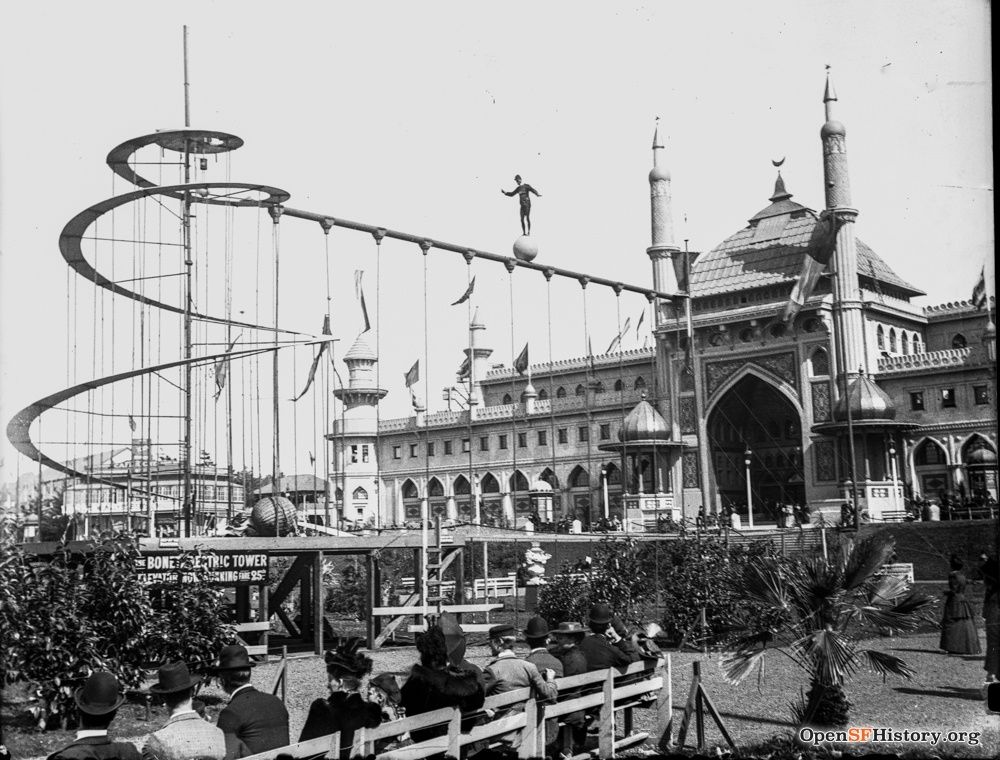
Number 9: Performer Achille Philion entertained fair-goers by walking atop a giant globe fifty feet in the air and maneuvered it down a narrow spiral track to the ground. What a stud!
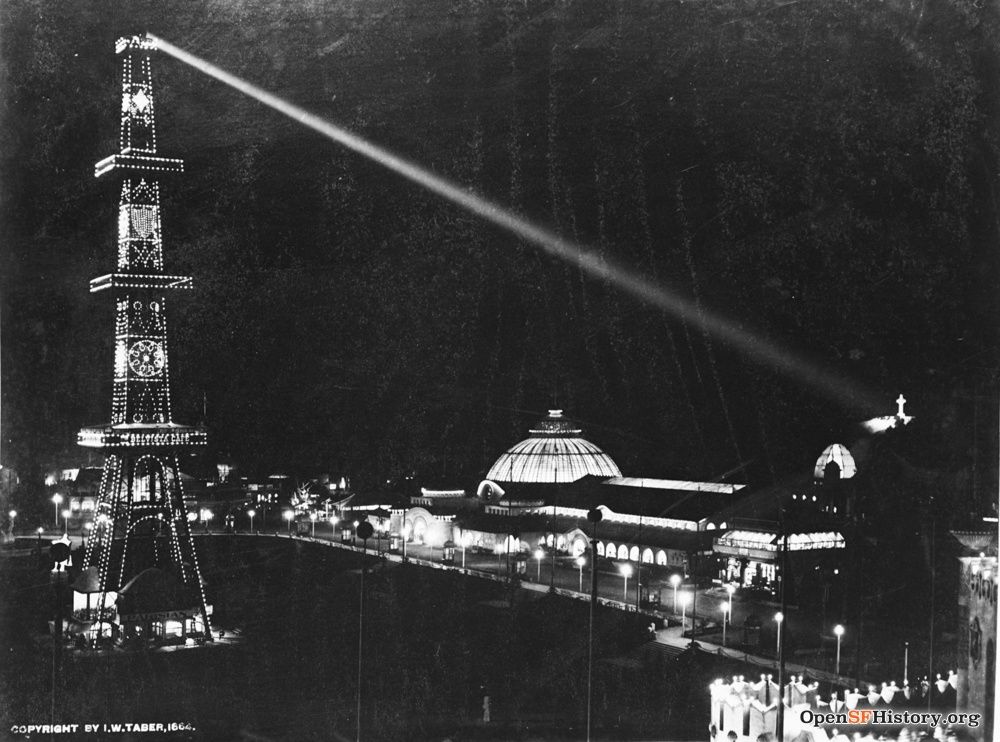
Number 10: We wrap up with Bonet’s electric tower. A third the size of the Eiffel tower, it had Paris beat with a programmed light show and spotlight so powerful that supposedly one could read a newspaper at 3rd and Market Streets by its beam. Electric light was still new and exciting and a main attraction of the Midwinter Fair overall.
That’s it! There’s lots to read and many more images of the 1894 Midwinter Fair out in the world. Try Western Neighborhoods Project (WNP), OpenSFHistory, and the References section at the bottom of the fair's Wikipedia page is pretty darned good.
During the fair's 125th anniversary year, WNP did a number of podcast episodes with fun subjects including where a lot of the exposition stuff ended up, the Butter Sculptress, and Bonet's tower.
